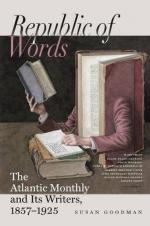If the reader is interested, or like to become interested, in the subject of sun-sculpture and stereoscopes, he may like to know what the last two years have taught us as to the particular instruments best worth owning. We will give a few words to the subject. Of simple instruments, for looking at one slide at a time, Smith and Beck’s is the most perfect we have seen, but the most expensive. For looking at paper slides, which are light, an instrument which may be held in the hand is very convenient. We have had one constructed which is better, as we think, than any in the shops. Mr. Joseph L. Bates, 129, Washington Street, has one of them, if any person is curious to see it. In buying the instruments which hold many slides, we should prefer two that hold fifty to one that holds a hundred. Becker’s small instrument, containing fifty paper slides, back to back, is the one we like best for these slides, but the top should be arranged so as to come off,—the first change we made in our own after procuring it.
We are allowed to mention the remarkable instrument contrived by our friend Dr. H.J. Bigelow, for holding fifty glass slides. The spectator looks in: all is darkness. He turns a crank: the gray dawn of morning steals over some beautiful scene or the facade of a stately temple. Still, as he turns, the morning brightens through various tints of rose and purple, until it reaches the golden richness of high noon. Still turning, all at once night shuts down upon the picture as at a tropical sunset, suddenly, without blur or gradual dimness,—the sun of the picture going down,
“Not as in Northern climes obscurely
bright,
But one unclouded blaze of living light.”
We have not thanked the many friendly dealers in these pictures, who have sent us heaps and hundreds of stereographs to look over and select from, only because they are too many to thank. Nor do we place any price on this advertisement of their most interesting branch of business. But there are a few stereographs we wish some of them would send us, with the bill for the same: such as Antwerp and Strasbourg Cathedrals,—Bologna, with its brick towers,—the Lions of Mycenae, if they are to be had,—the Walls of Fiesole,—the Golden Candlestick in the Arch of Titus,—and others which we can mention, if consulted; some of which we have hunted for a long time in vain. But we write principally to wake up an interest in a new and inexhaustible source of pleasure, and only regret that the many pages we have filled can do no more than hint the infinite resources which the new art has laid open to us all.




